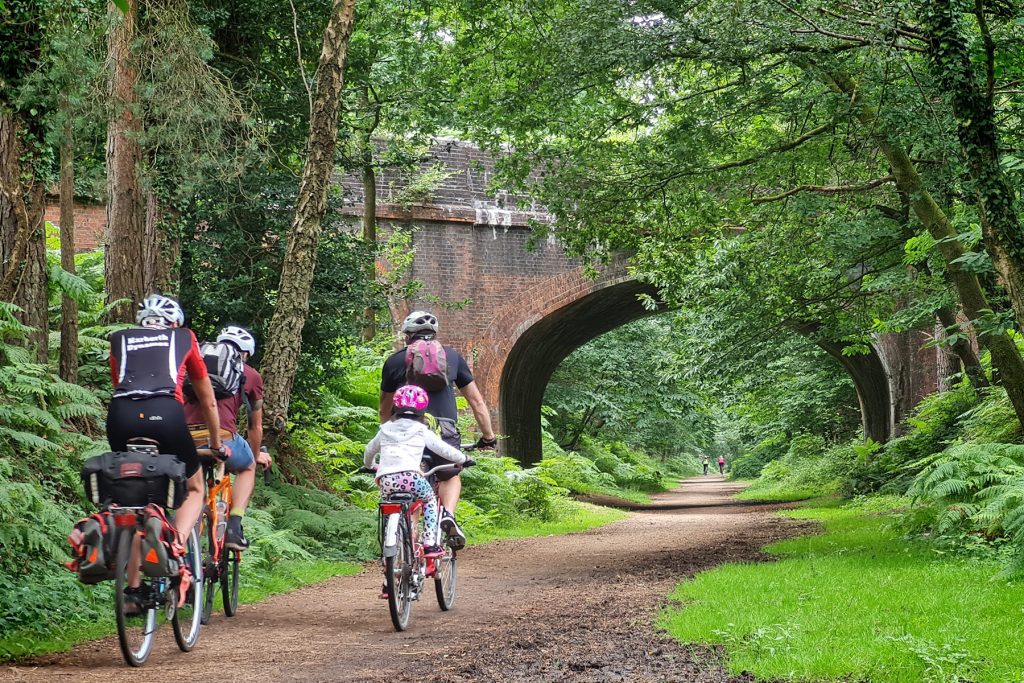Campaigners have welcomed a report which identifies the potential walking and cycling value of 50 Victorian bridges earmarked for “destruction” by National Highways.
The state-owned roads company manages the Historical Railways Estate (HRE) of 3,200 structures on the Department for Transport’s behalf. Last summer, the Government halted a major works programme which would have seen dozens of them infilled or demolished. The invention followed the controversial burial of a bridge at Great Musgrave, Cumbria, in a thousand tonnes of aggregate and concrete, despite it being needed for a link between two heritage railways.
In September, the DfT asked Sustrans – custodians of the National Cycle Network – to investigate the likely potential of 75 at-risk structures for future active travel schemes. It found that 26 have identifiable value for existing or planned routes, whilst 24 could prove useful for local networks as part of medium-term plans. The remainder are unlikely to find any walking or cycling function within the next ten years.
Amongst the structures recommended for retention is Stoke Road bridge on the edge of the South Downs National Park, intended for reuse within the Watercress Way. Hackney Bottom bridge in West Berkshire could be needed for a link between Newbury and Didcot, whilst Fenton bridge in East Lothian has value as part of a campaign to develop a path from Drem to Gullane.
Further investigations are recommended into the future of Gloucestershire’s Crows Castle bridge – spanning a proposed cycle route from Cheltenham to Bourton-on-the-Water – and Little Smeaton bridge in North Yorkshire which crosses the route of the recently conceived Coal-to-Coast Greenway, connecting Hull and Barnsley.
Graeme Bickerdike, a member of The HRE Group which is campaigning against National Highways’ programme of infilling and demolishing legacy rail structures, said: “We thank the Sustrans team for their considerable efforts in compiling the report. It demonstrates that two-thirds of the under-threat Historical Railways Estate structures have potential significance as we increasingly recognise the importance of developing an extensive network of local and national active travel routes as an alternative to carbon-emitting forms of transport.
“It’s worth noting that the one-third of structures considered unlikely to have future value only reflects a ten-year time horizon. As the report states, ‘An argument could be made for all the structures that, one day, they may be useful so this assessment needs to be seen in that light.’
“What’s needed more broadly is a change of culture within National Highways and the Department for Transport whereby the Estate is, by default, managed as an asset, not a liability. In this context, the NH/DfT Protocol Agreement needs to be reframed.”
The findings of the Sustrans report will help to inform decision-making around maintenance work on National Highways’ railway bridges which, in future, will be subject to a new review process developed by the company, including input from its Stakeholder Advisory Forum. All infilling and demolition schemes will require Ministerial approval.
“Sustrans’ report is an essential and positive step”, says Graeme Bickerdike. “But when will these 75 structures also be evaluated for their heritage and ecological significance? At least one is in a conservation area; another spans a Site of Special Scientific Interest; most form crucial parts of established wildlife corridors. And what about possible railway reopenings and heritage line extensions?
“We need a holistic understanding of the role historic bridges and tunnels can and do play in the 21st century before any decisions are made about their destruction.”
The bridge at Great Musgrave is soon expected to be the subject of a retrospective planning application. Its infilling was carried out under powers that only permit temporary works in emergency situations; however the bridge was in good condition, with only a handful of minor defects. Eden District Council, the Local Planning Authority, has told National Highways that it needs to obtain planning permission if the infill is to be retained beyond 23 May.






